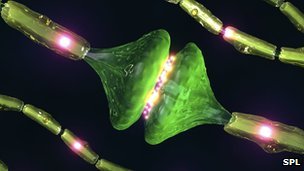A scientist at the University of Buffalo used an FDA-approved drug and human stem cells to increase the production of myelin in a myelin-deficient mouse model. The research (“Anti-Muscarinic Adjunct Therapy Accelerates Functional Human Oligodendrocyte Repair”) is described in the Journal of Neuroscience.
“We have identified a new drug target that promotes stem cell therapy for myelin-based disease, such as MS,” says lead author Fraser J. Sim, Ph.D., assistant professor in the department of pharmacology and toxicology in the University at Buffalo School of Medicine and Biomedical Sciences.
The study shows it is possible to boost myelination by targeting human oligodendrocyte progenitor cells with solifenacin.
“Our hypothesis is that in MS, the oligodendrocyte progenitor cells seem to get stuck,” explains Dr. Sim. “When these cells don’t mature properly, they don’t differentiate into myelinating oligodendrocytes.”
In the new study, Dr. Sim and his colleagues first characterized the molecular pathways that govern the differentiation of human oligodendrocyte progenitor cells, and then identified drug candidates that would promote differentiation and myelin production. They found that when a muscarinic type-3 receptor on human oligodendrocyte progenitor cells was activated, differentiation was completely blocked.
“So we thought, if we had something that blocks instead of activates this receptor, could we boost differentiation?” he continues. To do that, the researchers turned to solifenacin, an antimuscarinic drug for overactive bladder; the bladder muscle contains several muscarinic receptors.
To test whether the drug could boost myelin synthesis, the researchers transplanted human oligodendrocyte progenitor cells into mice that could not make myelin. The result was increased differentiation and myelin synthesis from the transplanted human cells.
But Dr. Sim’s group needed a functional endpoint, a way to know that the myelin being made was being translated into improved behavior or function. So he teamed up with Richard J. Salvi, Ph.D., SUNY distinguished professor in the department of communicative disorders and sciences, and director of UB’s center for hearing and deafness.
Together, they determined that an auditory brainstem response, which records brain wave activity in response to sounds, would be appropriate.
“…solifenacin treatment of engrafted animals reduced auditory brainstem response interpeak latency, indicative of increased conduction velocity and thereby enhanced functional repair,” wrote the investigators. “Therefore, solifenacin and other selective muscarinic antagonists represent new adjunct approaches to accelerate repair by engrafted human progenitors.”
Dr. Sim and his team are now looking for funding for a small human trial.







